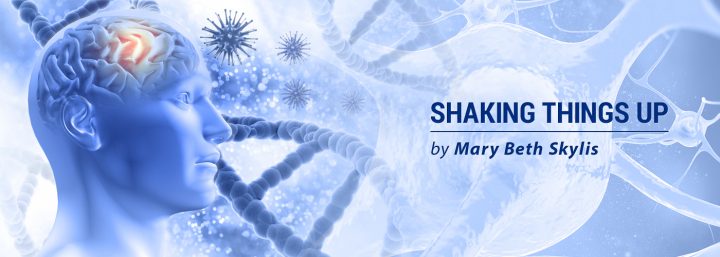James Parkinson’s Work Paved the Way for Future Research

James Parkinson changed the course of medical history when he first described the “Shaking Palsy” in 1817, at a time when little was known about neurological and degenerative diseases.
I decided to delve into the history of the disease to see how it might relate to modern medical practices. I wondered how James Parkinson’s research made current treatments possible for my dad.
Did Parkinson’s disease look like it does today? What might we learn from the man whose work has resonated throughout modern medical history?
Medical thinking during Parkinson’s time seems bizarre by today’s standards. Mere decades before Parkinson published his seminal essay, Scottish physician John Brown brought forth his “excitability” theory, categorizing illnesses as sthenic (strong) and asthenic (weak). According to the Encyclopedia Britannica, treatments were either sedatives or stimulants.
The Parkinson’s Disease News Today forums are a place to connect with other patients, share tips and talk about the latest research. Check them out today!
While characteristics of Parkinson’s disease were recorded in early clinical documents, James Parkinson was the first doctor to attempt to understand the disease in its entirety. He was way ahead of his time in terms of research and diagnosis.
Who was James Parkinson?
James Parkinson was born in London in 1755, the son of an apothecary and surgeon. He followed in the footsteps of his father, studying at the London Hospital Medical College, before qualifying as a surgeon in 1784.
As a political activist, he challenged the political system of the time. He also advocated for social reform and universal suffrage, later adopting humanitarian causes.
Parkinson began to study the condition, which was later given his name, hoping to alleviate the suffering of his patients. His motivation for becoming a doctor was apparent in a pamphlet he wrote about the requirements of a medical education. In the document, he describes “a sympathetic concern, and a tender interest for the sufferings of others [that] ought to characterize all those who engage themselves in a profession, the object of which should be to mitigate, or remove, one great portion of the calamities to which humanity is subject.”
An essay on the ‘Shaking Palsy’
In 1817, Parkinson published a 66-page document describing symptoms that he believed to be fundamental to diagnosis of the disease.
He defined the “Shaking Palsy (paralysis agitans)” as follows: “Involuntary tremulous motion, with lessened muscular power, in parts not in action and even when supported; with a propensity to bend the trunk forwards, and to pass from a walking to a running pace: the sense and intellects being uninjured.”
In a recent column, I described Dad’s approach to handling muscular changes as Parkinson’s progresses. Nearly 200 years ago, James Parkinson identified “lessened muscular power” as one of the key elements of the disease.
While observing the first signs of the disease, Parkinson noted: “So slight and nearly imperceptible are the first inroads of this malady, and so extremely slow its progress, that it rarely happens, that the patient can form any recollection of the precise period of its commencement. The first symptoms perceived are, a slight sense of weakness, with a proneness to trembling in some particular part; sometimes in the head, but most commonly in one of the hands and arms. These symptoms gradually increase in the part first affected; and at an uncertain period, but seldom in less than twelvemonths or more, the morbid influence is felt in some other part.”
The text goes on to evaluate six case studies, observing the differences and similarities in Parkinson’s patients and their disease progression.
It seems strange to me to think that Parkinson could predict how my dad’s journey with the disease would unfold. Dad noticed a slight tremor in his right foot, which led to his diagnosis in 2013. Over the last six years, the tremor has spread to his other limbs.
Parkinson’s work paved the way for future medical research by linking the symptoms that are unique to the disease.
Research toward a cure
Much of Parkinson’s research is still relevant today. His observations enabled researchers and neurologists to take the next steps in fighting Parkinson’s disease. Parkinson’s Life notes that the biggest difference between Parkinson’s observations and modern understanding of the disease is the current recognition of dementia on the spectrum of Parkinsonism symptoms.
His research was aimed at a cure and finding a solution that would slow the progress of the disease. When he died in 1824, he left a legacy that changed how Parkinson’s disease was understood in the future.
***
Note: Parkinson’s News Today is strictly a news and information website about the disease. It does not provide medical advice, diagnosis or treatment. This content is not intended to be a substitute for professional medical advice, diagnosis, or treatment. Always seek the advice of your physician or another qualified health provider with any questions you may have regarding a medical condition. Never disregard professional medical advice or delay in seeking it because of something you have read on this website. The opinions expressed in this column are not those of Parkinson’s News Today or its parent company, Bionews Services, and are intended to spark discussion about issues pertaining to Parkinson’s disease.







Cheryl Heuvelman
Wondering when research will delve more into natural or holistic options, especially for sleep and anxiety related issues, which are affect day to day quality of life. Thank you.